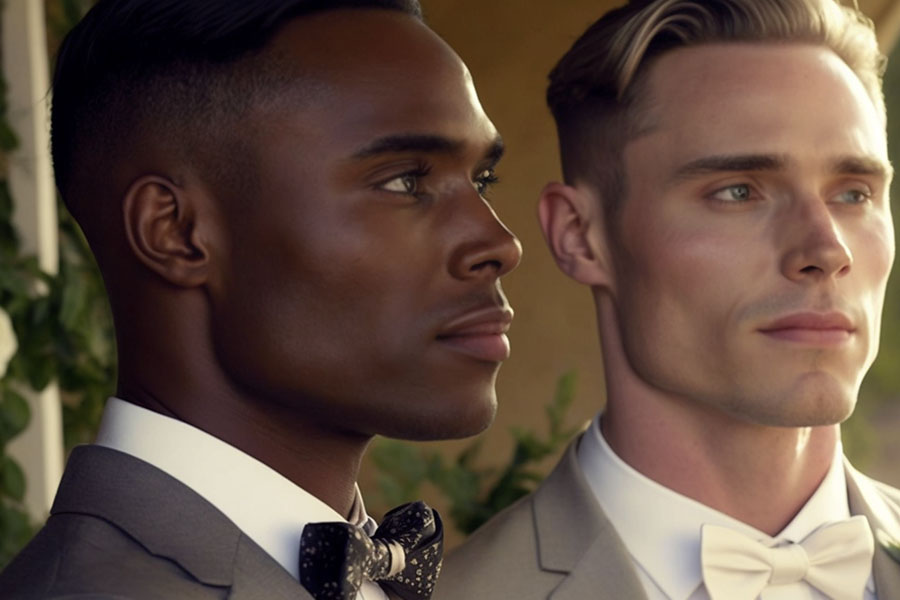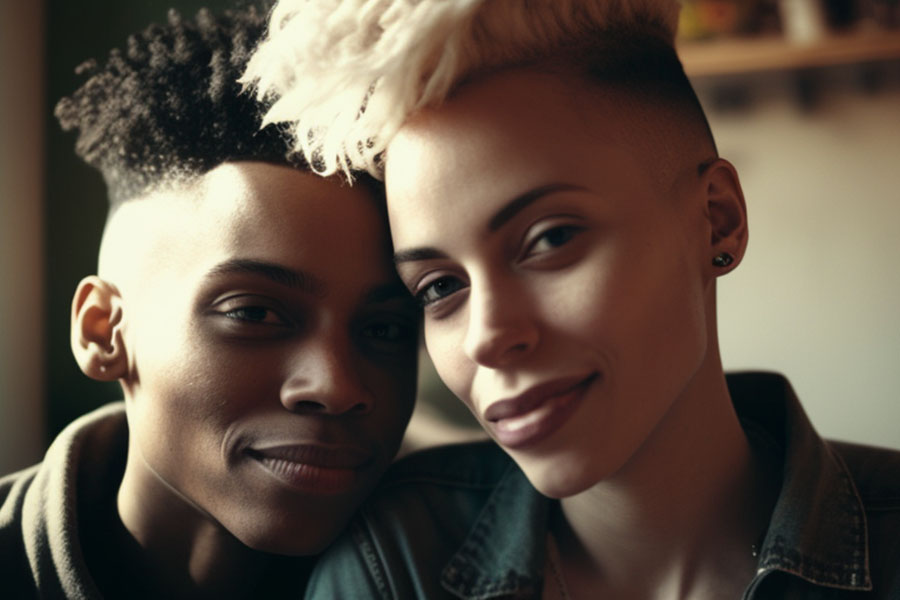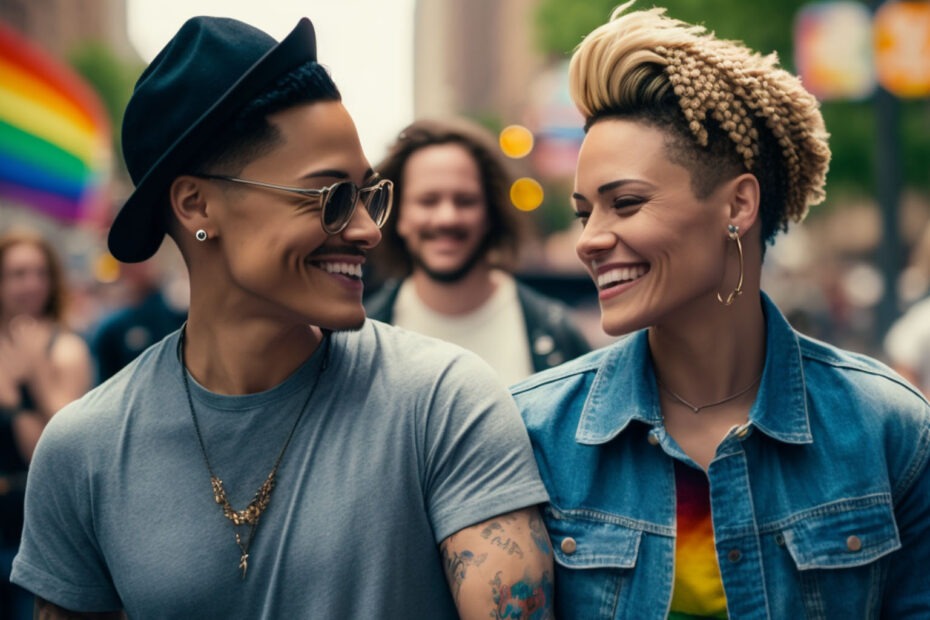Although in the last decade there has been some progress in the the fight for the rights and acceptance of the LGBTQ+ community, much work remains. Equal rights for those who identify as lesbian, gay, bisexual, transgender and queer are not special rights (though some would claim they are), and they don’t take anything away from everyone else’s already existing rights. It’s not pie! LGBTQ people have distinctive experiences and face difficulties that heterosexuals do not. We live in a heteronormative society. LGBTQ people are sometimes marginalized and discriminated against. LGBT Rights are a necessity.
The History of LGBT Rights: From Stigma to Legalization
It’s not been that long since homosexuality was considered a mental illness. The American Psychiatric Association (APA) first classified homosexuality as a mental disorder in the 1952, in the Diagnostic and Statistical Manual (DSM). The decision was based on the idea that being gay or lesbian was a form of deviance and that it was a mental illness that needed to be treated.
This classification of homosexuality as a mental illness was widely accepted by the medical and psychological communities and was used to justify discrimination and mistreatment of LGBT individuals. Many LGBT people were subjected to a variety of so-called “conversion therapies” in an attempt to “cure” them of their homosexuality. Obvs we know now that conversion therapy does not work, although it is still widely practiced in some parts of the world.
Challenging the classification of homosexuality as a mental disorder
However, starting in the 1970s, gay rights activists and mental health professionals began to challenge the classification of homosexuality as a mental disorder, and argued that being gay or lesbian was not a mental illness, but rather a normal variation of human sexuality. They also pointed out that the classification was based on outdated ideas and information without scientific evidence to back it up.
Eventually, in 1973, the APA voted to remove homosexuality from its list of mental disorders in the DSM-II. This was a significant step towards acceptance of LGBT individuals. Since then, the APA and other professional organizations have recognized that being LGBT is not a mental illness and that discrimination and mistreatment based on sexual orientation or gender identity is not acceptable. Unfortunately, the message hasn’t gotten through to some religious organizations and individuals, but that’s a post for another day.
It is worth noting that currently, being transgender is classified as Gender Dysphoria, which is a condition in which a person experiences significant distress because of a mismatch between their gender identity and their biological sex. This sense of unease or dissatisfaction may be so intense it can lead to depression and anxiety and have a harmful impact on daily life. However, many organizations and experts in the field are advocating for the depathologization of transgender and gender diverse identities, and the classification of Gender Dysphoria is currently under review by the World Health Organization and other professional organizations.
Fighting for LGBT rights: The Stonewall riots of 1969
One of the most significant moments in the history of LGBT rights was the Stonewall riots (also known as the Stonewall uprising, Stonewall rebellion, or simply Stonewall) of 1969. The riots were a series of spontaneous protests in response to a police raid that began in the early morning hours of June 28, 1969, at the Stonewall Inn in the Greenwich Village neighborhood of Lower Manhattan in New York City. Patrons of the Stonewall, other Village lesbian and gay bars, and neighborhood street people fought back when the police became violent. The Stonewall riots are considered to be the catalyst for the modern gay rights movement and the twentieth-century fight for LGBT rights in the United States.

The legalization of same-sex marriage
The legalization of same-sex marriage was another significant turning point in the struggle for equal rights for the LGBT community.
In the 2015 case of Obergefell v. Hodges, the US Supreme Court held that states must authorize same-sex unions and recognize unions conducted in other states. This was a huge victory for the LGBT community and marked a major step forward in the fight for equality.
Writing for the majority, Justice Anthony Kennedy asserted that the right to marry is a fundamental right “inherent in the liberty of the person” and is therefore protected by the due process clause, which prohibits the states from depriving any person of “life, liberty, or property without due process of law.” By virtue of the close connection between liberty and equality, the marriage right is also guaranteed by the equal protection clause, which forbids the states from “deny[ing] to any person…the equal protection of the laws.”
Kennedy then argued at length that “the reasons marriage is fundamental,” including its connection with individual liberty, “apply with equal force to same-sex couples.” Such considerations, he concluded, compel the court to hold that “same-sex couples may exercise the fundamental right to marry.”
Current Challenges Facing the LGBT Community
But don’t get too comfortable just yet. Same-sex marriage is legal, but that doesn’t mean that the fight for LGBT rights is over. Discrimination, violence, and marginalization are still very real issues for many in the LGBTQ+ community.
Transgender people are a significant and frequently stigmatized part of the LGBT community who face particular difficulties in obtaining acceptance and rights. According to research by the National Center for Transgender Equality, many transgender people report that medical care has been withheld from them or that they have faced discrimination from medical professionals.
Trans people also face significant economic challenges, including high unemployment and poverty rates. Compared to the general population, transgender people are almost four times more likely to live in poverty and are twice as likely to be unemployed. For a trans person, this may have major repercussions, such as homelessness, ill health, and a lack of access to basic needs. According to The Human Rights Campaign, transgender people – particularly trans women of color – are more likely to be victims of violence.

When it comes to prejudice and marginalization, LGBT people of color may also experience significant difficulties. LGBT people of color are more likely to experience workplace discrimination or poverty, according to a survey by the Movement Advancement Project.
LGBT youth
LGBT youth are also a vulnerable group. They are more likely to experience bullying, harassment, and violence in school. They are at a higher risk for suicide and mental health issues. Some may fear their parents won’t accept them and that they will be kicked out of their home for being LGBT or Q. Others may fear their friends will reject them if they come out. It’s important for parents, educators, and other adults to be aware of these challenges to LGBTQ youth and to provide adequate support and resources for them.
Youth who identify as LGBT are particularly at risk. They are more likely to experience bullying, harassment, and violence in school. They are more likely to have mental health issues and suicidal thoughts. Some might worry that their parents won’t accept them or that they’ll be kicked out of their house because they identify as LGBT or Q. Others might worry that if they come out, their friends will reject them. Parents, educators, and other adults should be aware of these issues facing LGBTQ adolescents, and should provide them with adequate support and resources.

Be an Advocate for LGBT Rights
One of the best ways to support the LGBTQ community is by educating yourself and others. This can be as simple as having conversations with friends and family about LGBT rights, or reading books and articles on the topic. When you see homophobia or transphobia, call it out. By educating yourself, you’ll be better equipped to have meaningful conversations with others and to advocate for change.
How about volunteering your time and resources? You could volunteer at a local LGBT youth center or join an organization that advocates for LGBT rights. By giving back to the community, you can make a real difference in the lives of LGBTQ people.
Activism is another way to support the community. This could be anything from participating in protests and rallies to lobbying your elected officials to get legislation changed. Activism is a powerful tool for creating change and a great way to make your voice heard.
Finally, be an ally to the LGBT community. Be supportive and respectful of LGBT people, and work to create a more inclusive and accepting society. By being an ally, you can help create a more equitable and just world for everyone. Love is love.
